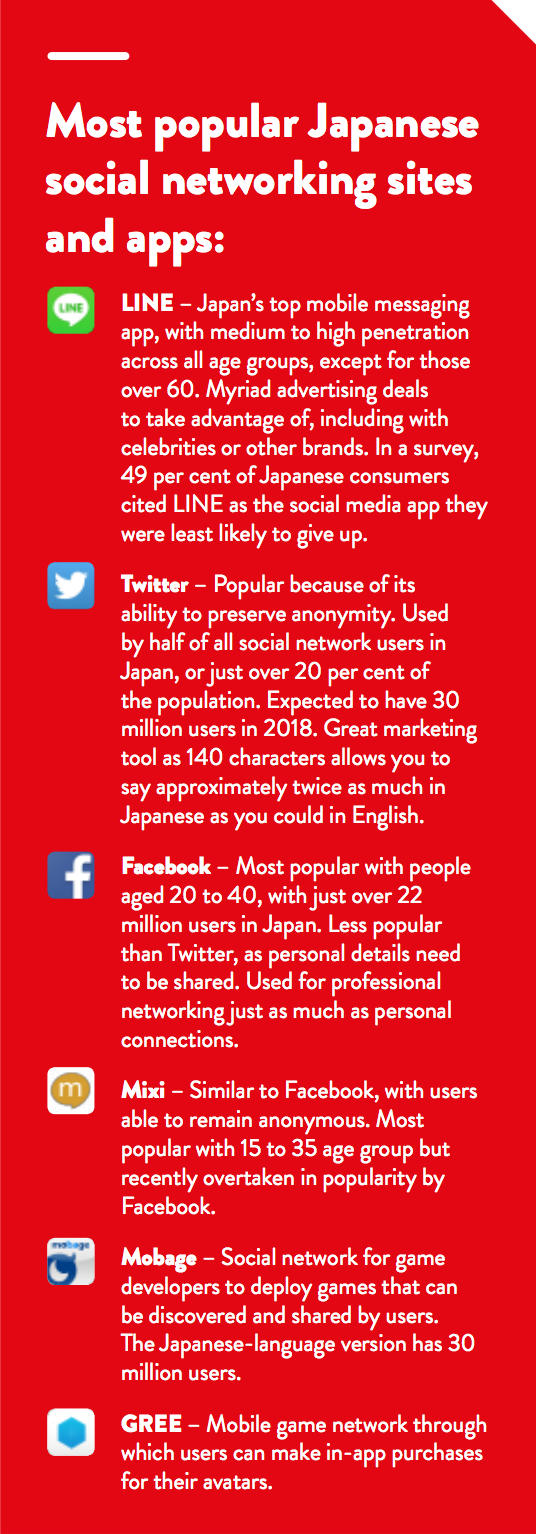Marketing in Japan
There are many choices to make when marketing and selling your products in the Japanese market.
Direct exporting
Exporting directly, rather than relying on Japanese agents or distributors, is a popular option among Australian firms that sell products in Japan. Exporting directly to Japan means involving yourself with every aspect of the export process, including:
- Market research
- Marketing
- Distribution
- Sales and receivables
Advantages of directly exporting your product include greater control of all aspects of the process, better margins and more direct customer relationships. The disadvantages of direct exporting include the higher costs you may incur from having to employ a number of in-house staff to cover all the aspects of the export sale process.
Agents and Distributors
- Agent: An agent is a representative of the supplier, but does not take ownership of the goods. An agent is generally paid a commission based on an agreed percentage of sales value generated.
- Distributor: A distributor takes ownership of the goods by buying them and reselling them in Japan, either to local retailers or consumers directly. In some cases, the distributor may sell to other wholesalers who then sell to local retailers or end users.
The most important consideration when choosing an agent or distributor is to ensure that you can establish a close working relationship; you must be able to build high levels of trust and regular communication.
Online Sales
Japan has one of the highest internet penetration rates in the world, with more than 109 million users,  and its online sales growth is strong. It is expected that by 2018, e-commerce sales will grow to AUD 164 billion from AUD 120 billion in 2014.
and its online sales growth is strong. It is expected that by 2018, e-commerce sales will grow to AUD 164 billion from AUD 120 billion in 2014.
Two key trends are broadly responsible for the growth in online sales. The first is the increasing cost consciousness of Japanese consumers. Second, Japanese are spending more time at home than ever, with 46 per cent of respondents to a McKinsey survey citing an increased likelihood of staying at home, compared to one to two years previously.
Direct Selling
Direct selling – making direct contact with buyers and end users – has declined in Japan in recent years, as new and diverse retail channels have flourished. However, direct selling remains an option for some products, and with some types of Japanese consumers.
Franchising
For Australian brands looking to bring their goods and services to Japan, franchising is a popular and proven expansion technique. Franchising provides access to local capital and local knowledge of consumer habits, retailing practices and real-estate opportunities. Franchising is popular in Japan, particularly in the food and beverage industries and in retail and business services.
Marketing and Advertising
Competition for the attention of consumers is intense. The best way to deal with the complexities of Japan for marketing and advertising purposes is to invest in and hire local knowledge. It is important to create a comprehensive marketing plan, which also includes elements such as your brand identity, stakeholder management, public relations, media (traditional, digital and social), and your product/ brand value proposition.
Labeling
Japan has strict rules for product labelling, particularly when dealing with fresh and processed food safety. All food and beverage products must have a sticker attached to each package giving a detailed description in Japanese of the contents, including any preservatives or artificial colouring, the name and address of the importer and the date of import as well as the date of manufacture. Containers of canned and bottled goods, soft drinks, smallgoods, frozen foods and pre-packed foods must be marked and labelled solely in metric measurement by the Australian exporter.
Want to learn more? Explore our other Indonesia information categories or download the Japan Country Starter Pack.
